A Conversation with Ava Cotlowitz, Art Teacher
With the COVID-19 outbreak, educators have needed to focus on creating accessible and engaging lessons for students learning remotely.
Ava Cotlowitz, an elementary school Art Teacher from PS 32 in Brooklyn, enrolled in enrolled in summer professional development courses at Materials for the Arts. What follows is a condensed and edited conversation with Ava, as she discusses the value of art and reuse for students and reflects on her experience teaching during COVID-19.
MFTA’s next professional development course begins November 7. Visit our professional development page to register for the course today.
1. Covid-19 challenged teachers to redesign and adapt their lesson plans for learning outside of the classroom. What is one positive experience you had while working with your students remotely?
I felt like because kids were stuck at home—and you know, couldn’t go out, couldn’t play with their friends—they did rely on creating as a mode of passing time or just as a way to be engaged in something. And so compared to the 45 minutes once a week that I have with my students in the classroom, I could tell by the caliber of art I was receiving online that some of my students were spending a lot of time on what they were creating and really investing energy and time. And that is, I think, a blessing, a silver lining that during this really traumatic and intense moment in history there is an outlet of art that kids can rely on. And I do hope that my work with them in the classroom and teaching them that being an artist comes from within them, rather than from me as the teacher […]. That behavior, that habit of being an artist coming from within them, that helps them move through this pandemic and create art on their own.
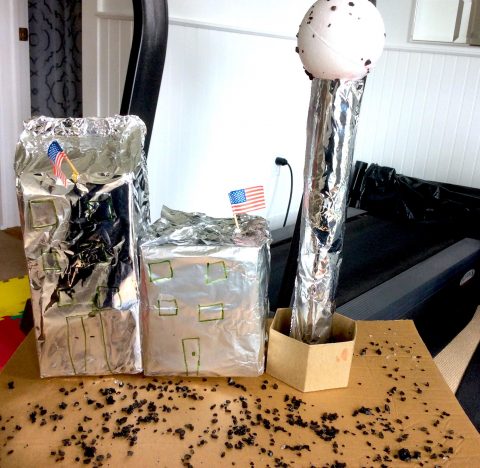
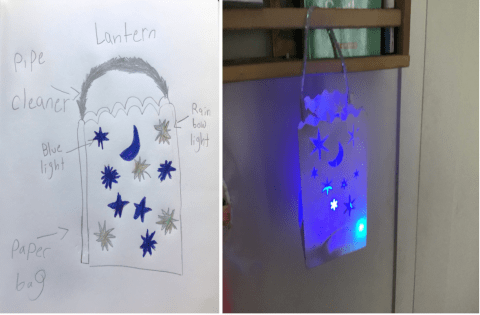
2. Our professional development classes provide teachers with the tools to incorporate everyday objects into projects. What made you interested in taking a course with Materials for the Arts?
I was really intrigued by the idea that there was a space where teachers could visit and take things that may have been discarded by someone else, and then find ways to repurpose them in the classroom. The space itself was really fascinating to me, and then also just the subject matter of Joy’s classes is very much aligned with the kinds of art that I teach in my own classroom […]. During remote learning, I did a lot of drawing lessons that revolved around students using, definitely what I knew that they would have, which is some sort of surface and then a drawing tool, like a pencil or pen. But then I would also do a bunch of collage and sculpture lessons and those lessons really targeted, looking around the home, finding things that you might have turned away that you can repurpose. I think that that is 100% essential. I think teachers need to—art teachers need to be prepared to help students utilize the space they have and find things that they can use in innovative ways.
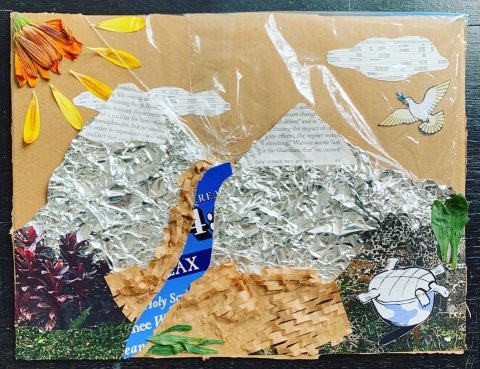
3. Art is an important tool to help express and process emotions. How have you seen your students deal with the pandemic and social justice issues?
I teach a lot of students who have had very traumatic experiences and are continuing to—and so the social emotional work that I do with them is also very important. And then you have the whole lens of the pandemic being a completely traumatic experience and something very difficult for kids to cope with. I teach through a pedagogy called Teaching for Artistic Behavior and it really values the child as the artist and teaches a series of studio habits that help kids develop artistic behaviors like reflecting, expressing, and envisioning. And I made sure that my students had the opportunity to look at artwork that could elicit a lot of different responses. And then they would always be required—second grade through fifth grade—to write artist statements. I also want them to have that kind of writing component where they can express in words their creative process or what they might be thinking. I know that throughout remote learning, a lot of my students created art about the pandemic. There were a lot of masks and different kinds of imagery that showed their expression of this time.
When the George Floyd killing took place we were very conscientious in our school to communicate to our kids about this and find ways to help them through it. And so, for an art project that I did during this time, I left it a little bit more open ended, but I showed my students artwork by artists who are tackling social issues, artist activists. They made art about Black Lives Matter, climate change, food insecurity, and I had my students create an artwork that expressed how they might want to change the world. I am very flexible with my curriculum and I try to just kind of ebb and flow with what is required of me as an educator.
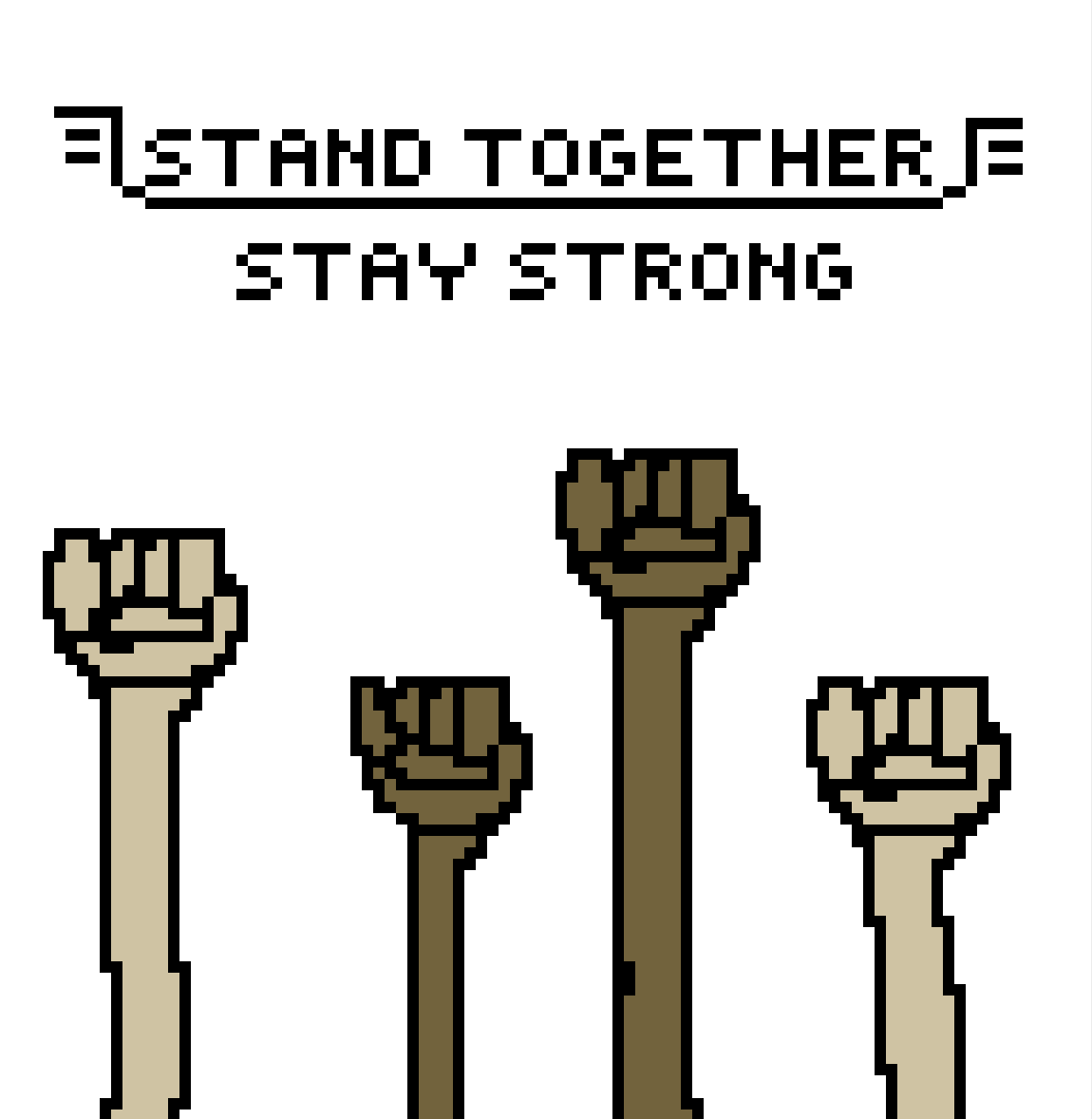
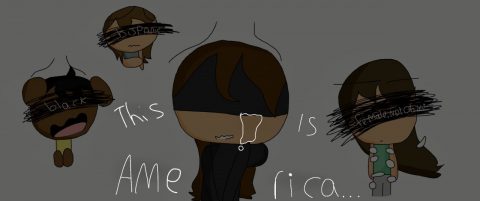
4. Teaching remotely can pose a challenge for educators. What advice do you have for teaching remotely?
I think that my advice is to—for the teacher and for the art teacher—though I feel like this should be inherent in an art teacher’s work, but to cast as wide of a net as possible in what you are asking kids to do. So, if you can give some sort of prompt where kids have the option of which materials they can choose from, so as to not leave any children out because a child doesn’t have paints, or they aren’t able to look for something one day. Giving that choice of materials, giving a choice of content, just understanding that during this time, as hard as it is for adults, it’s ten times harder for kids, and that they need the room to express themselves. Just taking extra consideration to help kids to really express what’s in their hearts and in their minds in a very organic and conscientious way would be my advice.